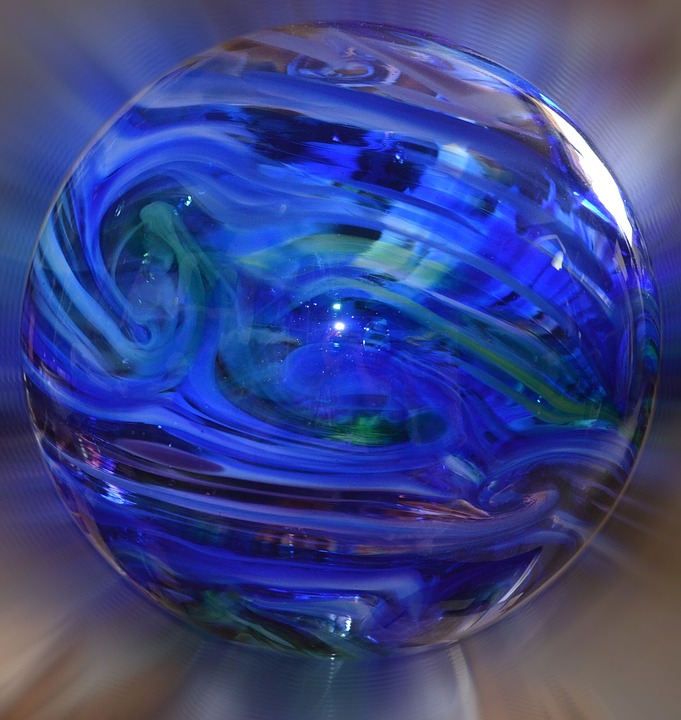Alchemy And The Art Of Glassmaking
Alchemy and the art of glassmaking have a long and intertwined history. Both alchemy and glassmaking involve the transformation of raw materials into something new and valuable, and alchemists were among the earliest practitioners of glassmaking.
Author:Aurora SmithReviewer:Ava MartinezApr 09, 202317 Shares492 Views

Alchemy and the art of glassmakinghave a long and intertwined history. Both alchemy and glassmaking involve the transformation of raw materials into something new and valuable, and alchemists were among the earliest practitioners of glassmaking.
In this article, we will explore the fascinating connection between alchemy and the art of glassmaking.
The Origins Of Glassmaking
Glassmaking dates back to ancient times, with the earliest known glass objects dating back to the 3rd millennium BCE in Mesopotamia. Glassmaking techniques spread to Egypt and the Roman Empire, where glass became an important material for both decorative and practical purposes.
The earliest glass objects were made by heating a mixture of sand, soda, and lime in a furnace until it melted, and then shaping the molten glass into the desired form.
Alchemy And Glassmaking
Alchemy, which originated in ancient Egypt and Greece, was a philosophical and spiritual practice that sought to transform base materials into something more valuable, such as gold or the philosopher's stone. Many alchemists were also glassmakers, as glassmaking involved many of the same techniques and principles as alchemy.
One of the key principles of alchemy is transmutation, or the transformation of one substance into another. Glassmaking also involves a kind of transmutation, as raw materials such as sand and soda are transformed into something new and valuable through the application of heat and skillful manipulation.
Both alchemists and glassmakers sought to create something new and beautiful out of seemingly mundane materials.
Alchemy and glassmaking also share a common interest in the properties of matter. Alchemists sought to understand the nature of matter and its hidden properties, while glassmakers needed to understand the physical and chemical properties of different materials in order to create glass that was both beautiful and functional.
The Influence Of Alchemy On Glassmaking
Alchemy had a significant influence on the development of glassmaking techniques and technology. Alchemists developed many of the tools and techniques that were used by glassmakers, such as furnaces, crucibles, and blowpipes. Alchemists also developed new glassmaking recipes, experimenting with different materials and proportions in order to create glass with specific properties, such as color and clarity.
One of the most important contributions of alchemy to glassmaking was the discovery of glassblowing. Glassblowing was a revolutionary technique that allowed glassmakers to create intricate and delicate shapes that were previously impossible to achieve. The invention of the blowpipe, which allowed glassmakers to blow air into the molten glass and shape it into a variety of forms, was a major breakthrough in glassmaking technology.
- Glassmaking was an important part of alchemy, as many alchemists were also skilled glassmakers.
- Alchemists developed many of the tools and techniques used in glassmaking, such as furnaces, crucibles, and blowpipes.
- Alchemists experimented with different materials and proportions to create glass with specific properties, such as color and clarity.
- The invention of glassblowing, which was a major breakthrough in glassmaking technology, was discovered by alchemists.
- Alchemists' interest in the physical and chemical properties of different materials contributed to the development of glassmaking techniques and technology.
The Symbolism Of Glassmaking In Alchemy
Glass has always held a special place in alchemical symbolism, as it is a material that is both fragile and resistant. The transparency of glass also made it a symbol of clarity and purity, as well as a vessel for holding and transforming substances.
In alchemy, glassmaking was seen as a metaphor for the transformation of the self, as the alchemist worked to purify and refine the raw materials of their own psyche.
The Role Of Alchemy In The History Of Glassmaking
Alchemy played a significant role in the development of glassmaking, as many of the techniques and tools used by glassmakers were invented or refined by alchemists. For example, the invention of the blowpipe, which made it possible to blow glass into intricate shapes, is credited to the alchemist Geber. Alchemists also experimented with different materials and proportions to create glass with specific properties, such as color and clarity.
The alchemical glassmaking tradition continued well into the 18th and 19th centuries, with famous glassmakers such as Christopher Pinchbeck and George Ravenscroft incorporating alchemical principles into their work.
The Alchemical Properties Of Glass And Its Use In Alchemy
Glass was considered a highly alchemical material due to its transparency and ability to hold and transform substances. It was often used as a vessel for containing and processing alchemical substances, such as acids, salts, and oils. Alchemists also believed that certain colors of glass had specific alchemical properties, with red glass symbolizing the Philosopher's Stone and green glass representing the essence of life.
Many of the glassmaking techniques developed by alchemists are still in use today, such as the use of blowpipes to shape glass and the use of crucibles to melt and mix materials. Some of the most innovative contemporary glass artists, such as Dale Chihuly, have drawn inspiration from the alchemical glassmaking tradition, creating works that explore the transformative power of glass.
The use of glass in scientific experiments and medical treatments is also a legacy of the alchemical glassmaking tradition, as alchemists were among the first to recognize the unique properties of glass and its potential applications.
The Influence Of Alchemy On Contemporary Glass Art
The alchemical glassmaking tradition continues to influence contemporary glass art, with many artists using glass as a metaphor for transformation and change. Some artists use glass to explore the intersection of science and spirituality, while others are drawn to its properties of transparency, reflection, and refraction.
The use of glass in large-scale installations and public art projects is also becoming increasingly popular, as artists seek to create immersive, transformative experiences for viewers. Overall, the alchemical tradition of glassmaking continues to inspire and inform the work of contemporary glass artists around the world.
People Also Ask
How Did Alchemy Influence The Development Of Glassmaking Techniques?
Alchemy played a significant role in the development of glassmaking techniques, as many of the tools and processes used by glassmakers were invented or refined by alchemists.
For example, the use of blowpipes to shape glass was first developed by alchemist Geber, while alchemists also experimented with different materials and proportions to create glass with specific properties.
What Is Alchemical Glass?
Alchemical glass refers to glass that has been imbued with alchemical properties or symbolism. In alchemy, certain colors of glass were believed to have specific alchemical properties, with red glass symbolizing the Philosopher's Stone and green glass representing the essence of life. Alchemists also used glass as a vessel for containing and processing alchemical substances.
How Has The Alchemical Glassmaking Tradition Influenced Contemporary Glass Art?
The alchemical glassmaking tradition continues to influence contemporary glass art, with many artists using glass as a metaphor for transformation and change. Some artists draw inspiration from the alchemical properties of glass, while others are drawn to its properties of transparency, reflection, and refraction.
The use of glass in large-scale installations and public art projects is also becoming increasingly popular.
Conclusion
The connection between alchemy and the art of glassmaking is a fascinating example of how different fields of knowledge can intersect and influence one another. Alchemists and glassmakers shared a common interest in the transformation of matter and the creation of something new and valuable out of seemingly mundane materials.
The techniques and principles developed by alchemists had a significant influence on the development of glassmaking technology, and the legacy of this intersection can still be seen in the beautiful and intricate glass objects that are created today.
Jump to
The Origins Of Glassmaking
Alchemy And Glassmaking
The Influence Of Alchemy On Glassmaking
The Symbolism Of Glassmaking In Alchemy
The Role Of Alchemy In The History Of Glassmaking
The Alchemical Properties Of Glass And Its Use In Alchemy
The Influence Of Alchemy On Contemporary Glass Art
People Also Ask
Conclusion

Aurora Smith
Author
Aurora Smith is an expert with over 8 years in psychics, with a passion for tarot reading.
She holds a Bachelor of Arts in Anthropology from Stanford University, bringing a strong academic foundation to her work in exploring mystical phenomena.
With her expertise in psychics, Aurora delves into tarot readings and magical practices, providing insightful content that engages and enlightens readers.
Her writing style is characterized by clarity and engagement, making complex concepts accessible and intriguing for readers.
Outside of her writing pursuits, Aurora enjoys delving into the mysteries of the supernatural world and practicing tarot readings.

Ava Martinez
Reviewer
Ava Martinez is a highly experienced author specializing in spirituality and tarot. With over 12 years of dedicated practice, Ava brings a wealth of experience and expertise to her writings.
She has dedicated herself to helping individuals gain insight and clarity through spiritual practices and tarot consultations.
Her deep connection to spiritual energies and engaging style make her readings a trusted resource for those seeking guidance and enlightenment.
Apart from her literary world, Ava embraces nature's gifts, explores meditation's depths, and intertwines the mystical essence of spells into her holistic perspective on life's journey.
Latest Articles
Popular Articles
